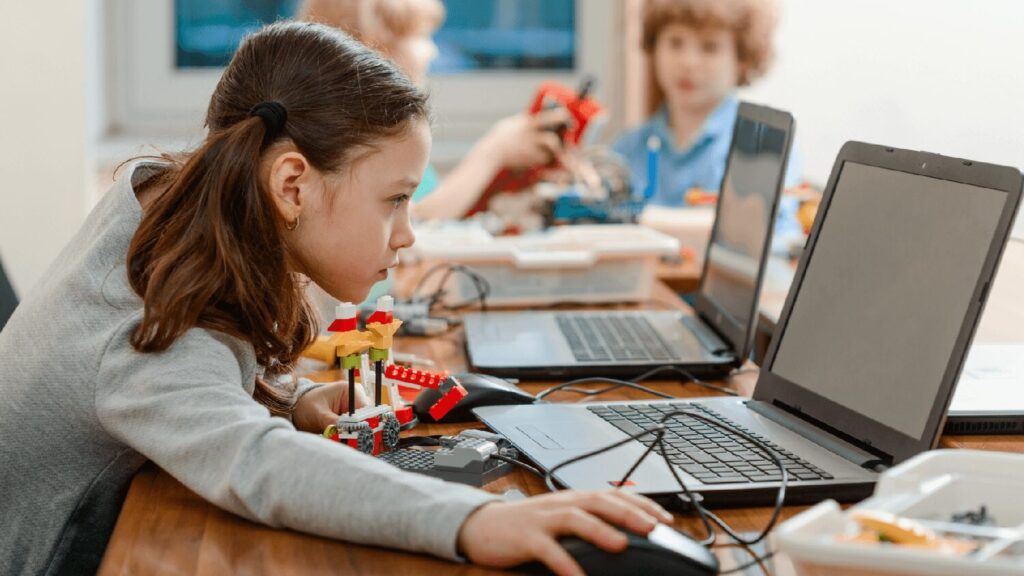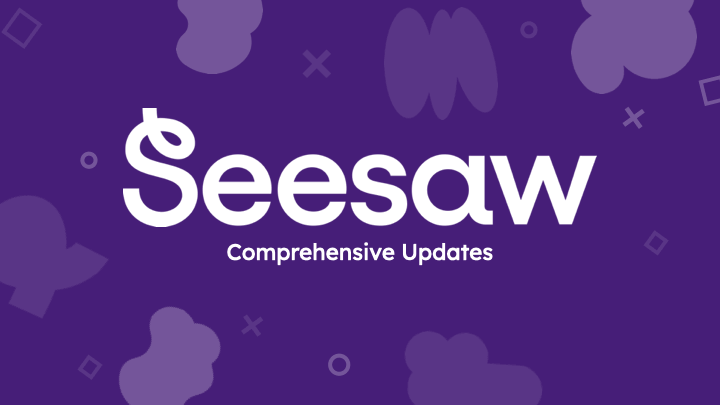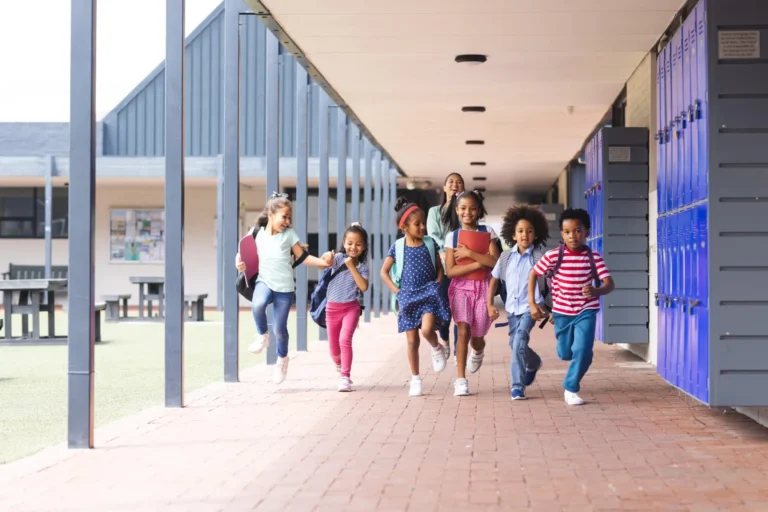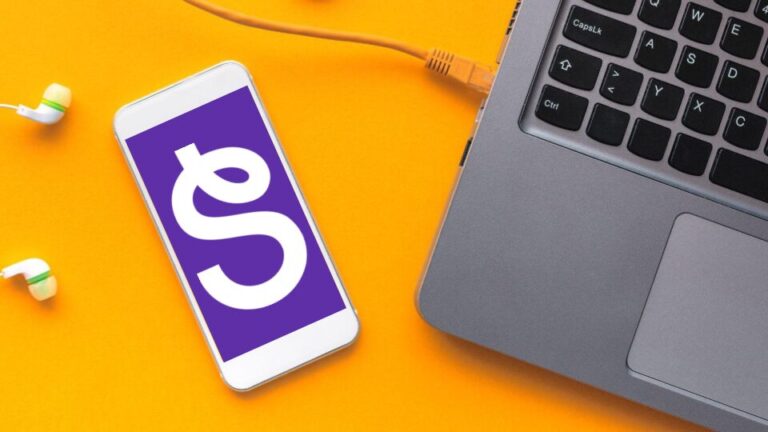Educators innovate to support students in a constantly changing world.
Integrating technology into instruction has transformed how educators ignite students’ curiosity, support each student’s unique needs, and prepare students for success through school and beyond.
One approach in particular that has transformed instruction with the help of technology is multimodal learning.
WHAT IS MULTIMODAL LEARNING?
Multimodal learning means engaging with concepts and ideas in multiple ways.
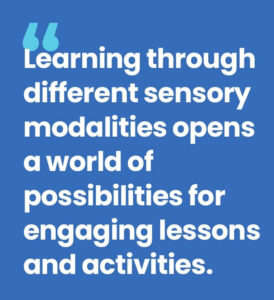
Some examples of multimodal learning may be familiar: Using manipulatives to solve a math problem, reading a passage with an illustration, or participating in a gallery walk with physical artifacts to name a few.
Other ideas may be new, such as listening to a podcast, exploring curated videos and articles on the web, participating in simulations, filming a news cast, or recording an original song.
What fun ways to learn! But do multimodal strategies really benefit learning?
BENEFITS OF MULTIMODAL LEARNING
Multimodal learning can support student achievement by making learning more engaging, accessible, connected, and relevant.
HIGHER ENGAGEMENT IN LEARNING
The most widely cited benefit of multimodal learning is increased student engagement, which research shows drives academic success and positive attitudes toward learning. Multimodal learning increases engagement by offering more ways for students to engage with content than traditional instructional strategies like reading, writing, and lectures. This variety is more stimulating and keeps learning exciting. It also opens opportunities to connect with students’ unique interests and skills.
LEARNING IS MORE ACCESSIBLE
Multimodal learning offers more entry points into learning and more ways for students to be successful. Not only does this make rigorous content more accessible for students with diverse needs, it supports students without identified disabilities as well. Multimodal learning can accommodate the needs of all learners.
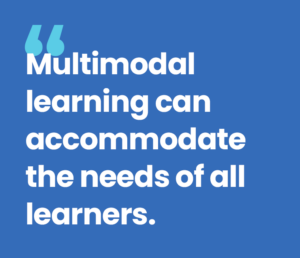
When learning is presented in one way, students engage that one part of the brain. When students engage with content in different sensory modalities, they engage and build connections across multiple parts of the brain. More connections in the brain mean better retention and recollection of learning.
CONTENT HAS REAL-WORLD RELEVANCE
Outside of school, students encounter new information in many different ways. They’re immersed in videos, pictures, stories, sounds, and experiences. Learning is more relevant – and more engaging – when it reflects students’ experiences outside of the classroom. Plus, it prepares students to critically and thoughtfully navigate our multidimensional world inside and outside the classroom.
3 STRATEGIES TO SUPPORT MULTIMODAL LEARNING
Integrating multimodal learning strategies into your instruction might just mean a few tweaks to what you’re already doing. Technology makes it easier than ever to integrate multimodal learning into your classroom.
STRATEGY 1: PROVIDE MULTIMODAL INPUTS
In addition to your favorite instructional resources, consider exploring multimodal inputs.
Multimodal inputs might include:
-
Audio recordings or podcasts
-
Visuals like illustrations, graphs, charts, and diagrams
-
Videos including documentaries, animations, and news segments
-
Interactive games
-
Demonstrations or simulations
Bonus: Many of these options allow students to access content independently. Rather than ask you for clarification, students can rewatch a video or reference a visual on their own as many times as they need.
STRATEGY 2: OFFER STUDENTS CHOICE
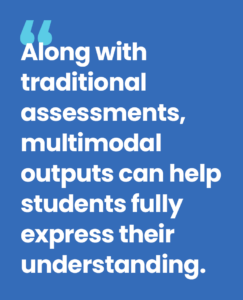
Options might include:
-
Recording a commercial or news clip
-
Creating a drawing or diorama
-
Putting on a play or reenactment
-
Making up a song or dance
-
Teaching the class or small group of peers
Along with traditional assessments like essays and quizzes, multimodal outputs can help students fully express their understanding.
With choice, students take ownership of their personal path to success.
STRATEGY 3: GIVE MULTIMODAL FEEDBACK
The learning process isn’t complete without feedback and revision!
With limited one-on-one time in class, a majority of feedback is given in writing. Yet for emerging readers, English Language Learners, and students with diverse needs, written feedback may not be accessible.
That’s where technology can help. You might:
-
Record audio feedback
-
Use translation tools to reduce language barriers
-
Record a demonstration video
-
Share exemplars
Multimodal feedback helps to ensure all students know what they need to do to grow.
Even small changes to what you’re already doing can make a difference. Start by sharing one multimodal resource, offering one alternative way to share learning, or giving audio feedback once a week. With each multimodal learning experience will come greater engagement, accessibility, connection, and relevance in your instruction.
